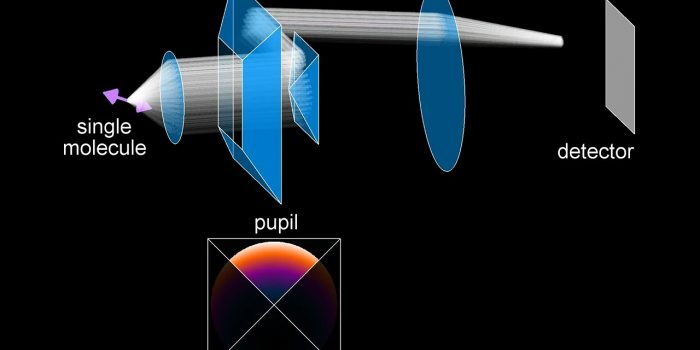Researchers have come up with a new technology to see very small molecules in 6D. Inspired by the James Webb Space Telescope (JWST) design, the latest technology uses mirror segments to sort and gather light on a microscopic scale and take three-dimensional images of molecules both in position and orientation.
“Think of creating a color picture when all you have are gray-scale camera sensors. You could try to recreate the color using a computational tool, or you can directly measure it using a color sensor, which uses various absorbing color filters on top of different pixels to detect colors,” said Matthew Lew, associate professor of electrical and systems engineering at the McKelvey School of Engineering at Washington University in St. Louis.

Now researchers from the McKelvey School of Engineering at Washington University in St. Louis have brought a new microscope called the radially and azimuthally polarized multi-view reflector (raMVR). The microscope collects as much light as possible, just like the James Webb Telescope. But instead of seeing distant objects, the new technology uses that light to distinguish distinct properties of small, fluorescent molecules bound to proteins and cell membranes.
“The setup is partially inspired by telescopes. It’s a very similar setup. Instead of the familiar honeycomb shape of the JWST, we use pyramid-shaped mirrors,” Zhang said, a recent Ph.D. graduate and author of the study.
The raMVR microscope can be used for imaging the three-dimensional (3D) positions and 3D orientations of single molecules, with precisions of 10.9?nm and 2.0° over a 1.5-micron depth range. Its resolution is 1.5 times better compared to the best techniques available so far.
The raMVR microscope uses polarization optics called waveplates along with its pyramid-shaped mirrors to separate light into eight channels. These channels represent a different piece of the molecule’s position and orientation.

“At the cutting edge of engineering physics, we often have to make tradeoffs to make our instruments compact. Here, we decided to take a different tack: How could we use every precious bit of light to make the most precise measurement possible? It’s absolutely fun to think differently about the architecture of a microscope, and here, we think the newfound 6D imaging performance will enable new scientific discoveries in the near future,” said Professor Matthew Lew.
The study is published in the journal Nature photonics.


